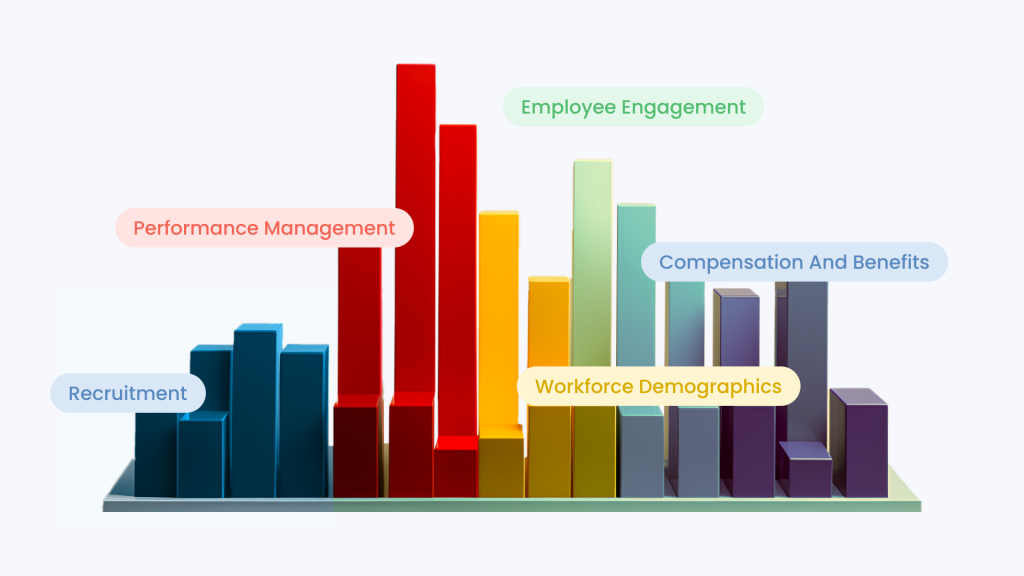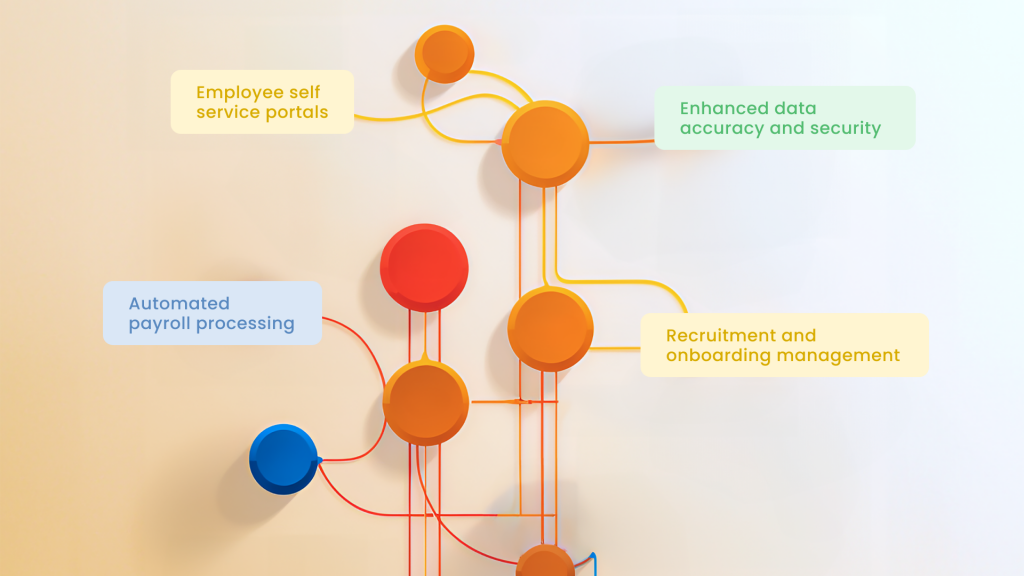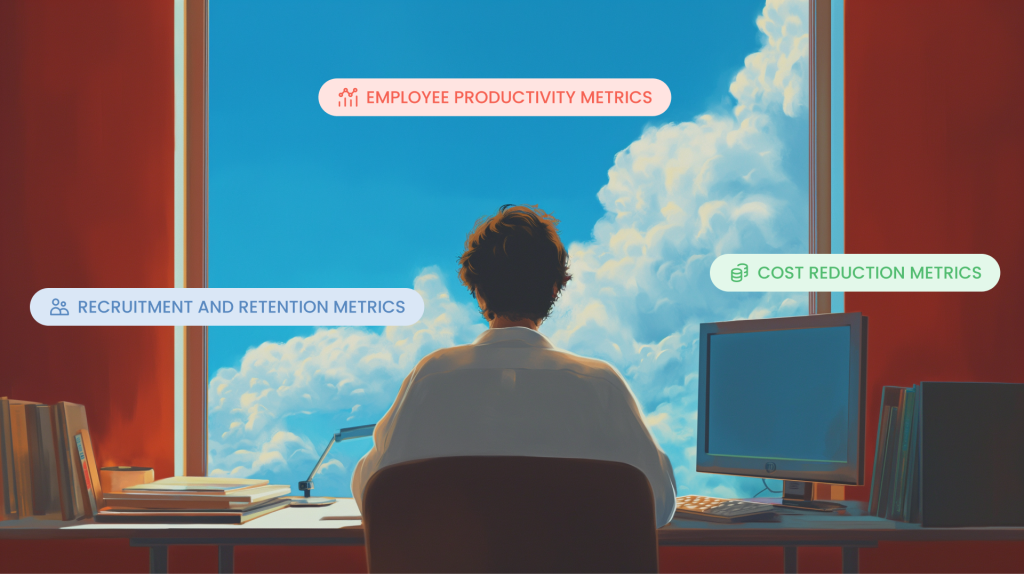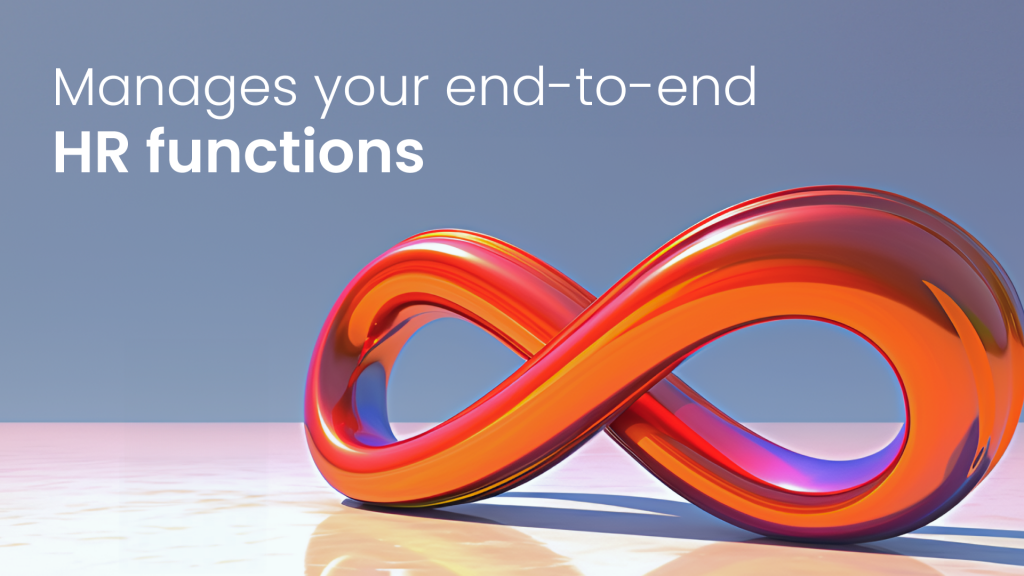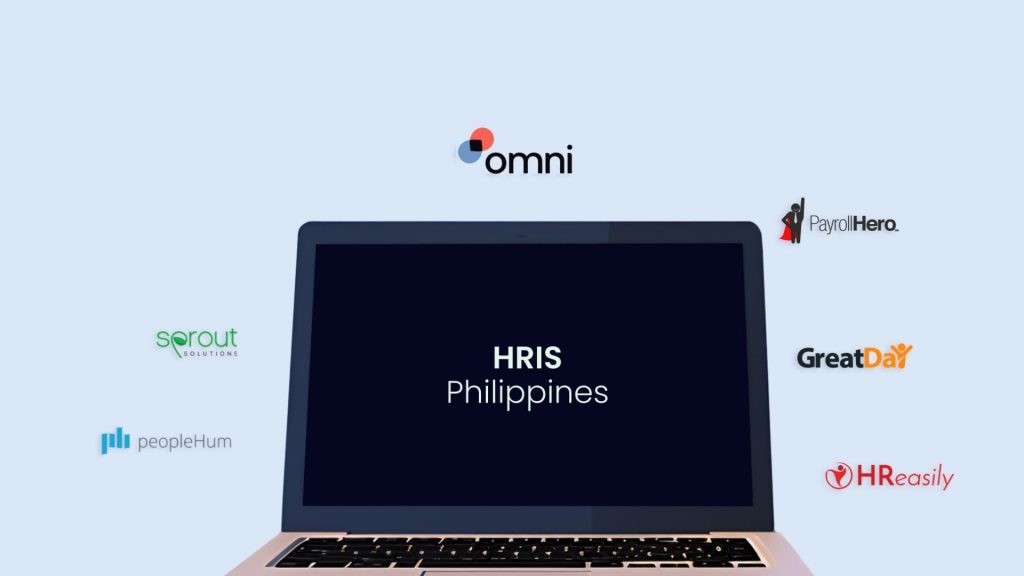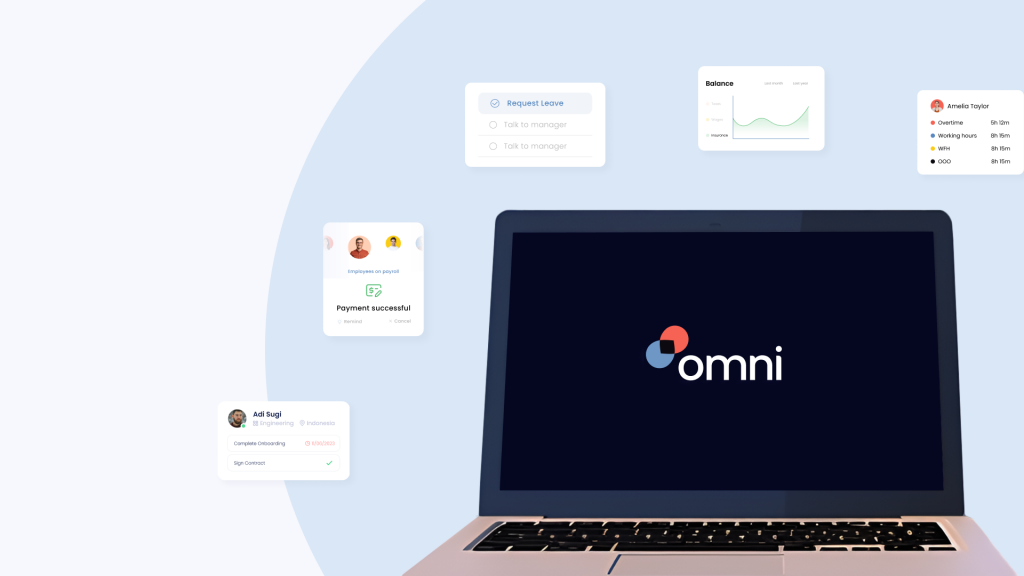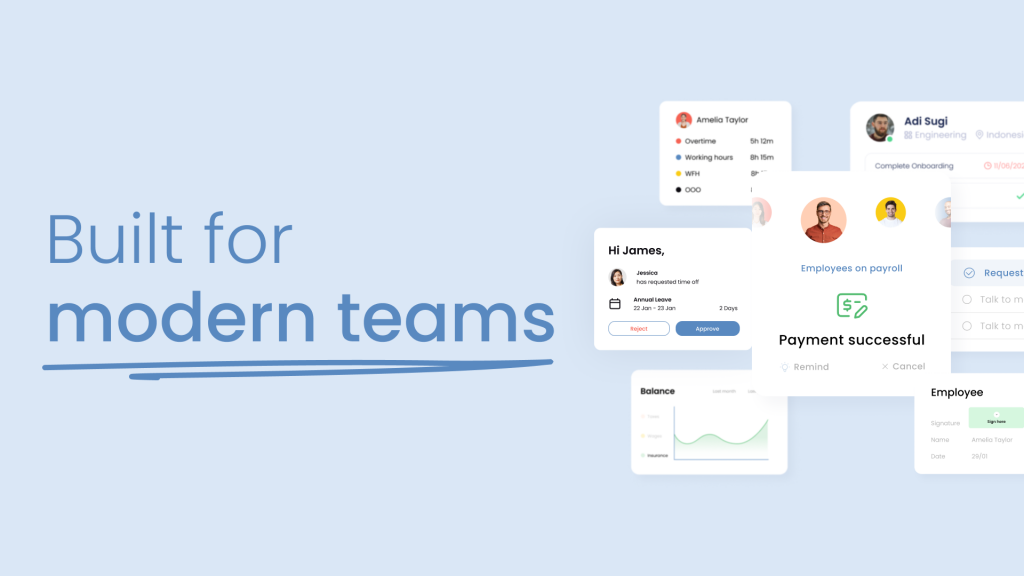We live in a data driven world, and those that find the most success are the ones who wield the available data most effectively. HR is no different—with reams of information about your workforce, you and your HR team are well poised to influence strategy and inform decision makers.
But with so much data out there it can become difficult to focus on what to track. That’s where HR metrics come in, specifically tailored to help your team know what to focus on, and what outcomes they can look forward to.
What are HR metrics?
Every department has different data relevant to their goals. In HR, these metrics are quantifiable measurements that look at the details of your organization’s workforce and HR processes.
These HR metrics provide valuable insights into your team’s performance, employee engagement, productivity, and how your HR department is ultimately contributing to the goals of your organization. We’ll do a deep dive on relevant metrics to track down below, but here are some examples of HR metrics commonly used to measure success:
Employee turnover rate
- Measures the percentage of employees who leave your organization within a specific period. High turnover rates might point to issues with employee satisfaction, retention, or workplace culture.
Cost per hire
- Calculates the total cost of hiring a new employee, including recruitment expenses, advertising costs, and the hiring manager’s time. It helps you assess how efficient the process is, and find areas you can cut back on cost.
Time to fill
- Measures the average time taken to fill open positions from the time they are approved to the time an offer is accepted. Longer time-to-fill rates may indicate challenges in attracting and hiring qualified candidates.
Employee satisfaction score
- Assesses your employees’ overall satisfaction with their job, work environment, and workplace culture. Employee satisfaction surveys or pulse checks are commonly used to measure this metric.
Diversity and inclusion metrics:
- Measures the representation of diverse groups within your organization, like gender, race, ethnicity, and age. HR metrics might include diversity ratios, representation in leadership roles, and engagement scores by demographic groups.
These are just a few of the HR metrics that can provide valuable insights into your HR management and employee engagement, helping your team to make data-driven decisions and drive success.
What are HR metrics used for?
Data has many different purposes, and can be used in a variety of ways. This is no different for HR metrics, which can be interpreted and leveraged to paint a holistic picture of your workforce. This includes:
Performance measurement: HR metrics allow you to assess the effectiveness and efficiency of your HR processes and initiatives. By tracking metrics like recruitment efficiency, training effectiveness, and attrition rates, your team can identify areas for improvement and optimize its HR strategies.
Strategic decision-making: Analyzing available data enables strategic decision-making by offering quantifiable insights into your workforce trends, employee engagement levels, and performance gaps. You and your leadership can use HR metrics to align current initiatives with the company mission and goals.
Resource allocation: Looking at how your organization allocates its resources will allow you to identify areas of high performance and areas needing improvement. By analyzing metrics such as cost per hire, training ROI, and turnover costs, you can better allocate resources on programs that drive results.
Identifying trends and patterns: HR metrics allow your team to identify trends and patterns within its workforce, such as turnover trends, absenteeism patterns, and performance trends. By monitoring these metrics over time, your HR department can spot emerging issues before they become a serious problem and take proactive measures to fix them.
Benchmarking: The right data will allow your team to benchmark its performance against industry standards and best practices. When you use metrics such as turnover rates, employee engagement scores, and compensation levels with industry benchmarks, you’ll be able to identify areas of strength and areas needing improvement.
Read next: What is Benchmarking in HR?
Employee engagement and retention: Analyzing HR metrics is absolutely essential for measuring and improving employee engagement and retention. Metrics such as employee satisfaction scores, turnover rates, and promotion rates provide insights into satisfaction levels and factors influencing employee motivation and retention.
Compliance and risk management: Ensuring compliance with legal and regulatory requirements related to workforce management is a top priority for HR teams. Metrics such as diversity ratios and training completion rates will help your organization mitigate risks and keep compliant with labor laws and regulations.
Armed with the right data, your HR Team will be able to adjust, update, forecast and strategize—fixing any issues that exist now, while laying the groundwork for success down the road.
Why are HR metrics important?
You probably already know the importance of data to make informed decisions. But studying key HR metrics can be truly transformative for your workforce initiatives and overall strategy. Here’s what you need to know:
Make informed decisions, and show how you did so: Access to valuable data and insights will enable your team to make informed decisions—and prove how you did so. Analyzing metrics such as employee turnover rates, recruitment efficiency, and training effectiveness, will help you identify trends, patterns, and areas for improvement, leading to more effective workforce management strategies, and a seat at the strategy planning table.
Determine what’s working (and what isn’t): Looking at the right metrics will help you assess the effectiveness and efficiency of your HR processes. By tracking key data points like employee productivity, engagement levels, and performance outcomes, you can evaluate the impact of your programs and make adjustments as needed to drive better results.
Align your work with high-level strategy: HR metrics help align your initiatives with high-level goals and objectives at your organization. Tracking metrics that directly impact business outcomes, such as revenue per employee, cost per hire, and employee turnover costs, will allow you to demonstrate the value of HR investments and ensure that your strategies are adding value to the overall strategy at your company.
Spend where it’s needed, cut where it isn’t: These metrics also allow you to allocate resources effectively by identifying areas performing well and areas needing improvement. Analyzing metrics such as cost per hire, training ROI, and turnover costs will help your team to allocate resources needed to address critical workforce needs and drive the outcomes you need.
Build a workplace people want to work at: Measuring and improving employee engagement and retention is at the core of a successful HR team. By tracking metrics such as employee satisfaction scores, turnover rates, and promotion rates, you can identify what is influencing employee engagement and retention at your organization, intervene where necessary to improve employee satisfaction, and boost retention.
Never stop improving: HR metrics support a company culture of continuous improvement by providing feedback on HR initiatives and processes. Regularly monitoring and analyzing metrics will help you identify opportunities for improvement and make necessary changes over time to enhance HR effectiveness and efficiency, driving better business outcomes in the long run.
Considerations for Setting HR Metrics
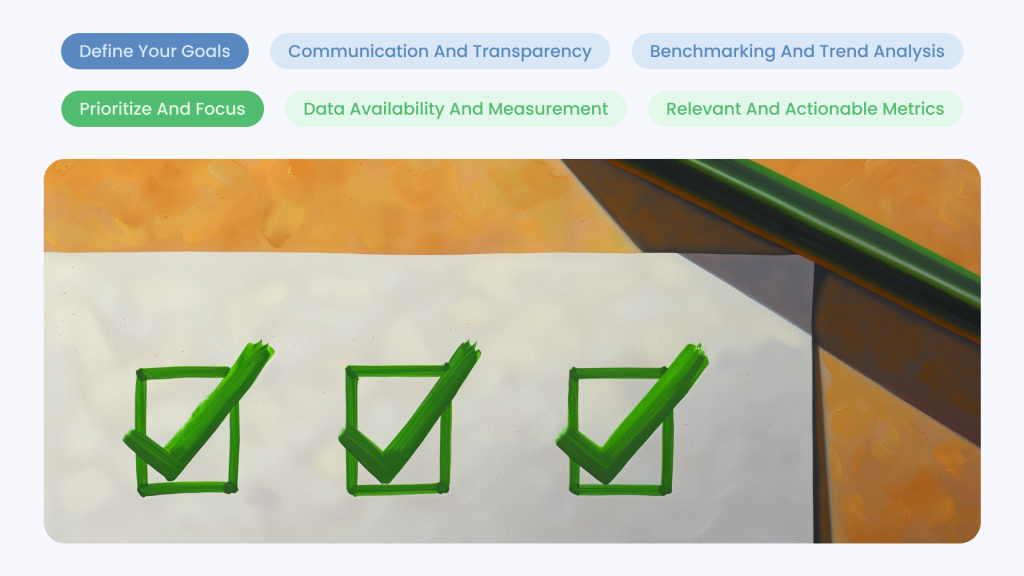
When setting HR metrics, it’s important to make sure the metrics you’re tracking are meaningful, relevant, and aligned with your organization’s goals. Here are some considerations to keep in mind:
1. Define your goals
Clearly define the objectives and goals you want to achieve through HR metrics. Whether it’s improving employee engagement, reducing turnover, or enhancing workforce productivity, having clear goals will help guide your metric selection process.
2. Prioritize and focus
Prioritize the most critical areas for measurement based on their impact on organizational success. Instead of tracking a vast data set, focus on a few key metrics that align closely with your strategic objectives and can drive meaningful change.
3. Relevant and actionable metrics (SMART)
Ensure that your HR metrics are relevant to your goals and are actionable. Use the SMART criteria (Specific, Measurable, Achievable, Relevant, Time-bound) to ensure that each metric is clearly defined, quantifiable, and tied to specific outcomes.
4. Data availability and measurement
Assess the availability and quality of data needed to measure each metric effectively. Ensure that you have access to accurate and reliable data sources, such as HRIS, performance management systems, and employee surveys, to track and analyze the chosen metrics.
5. Benchmarking and trend analysis
Compare your HR metrics against industry benchmarks and historical data to gain insights how your organization performs relative to competitors and past performance. Trend analysis helps you identify patterns and changes over time, allowing you to anticipate challenges and opportunities.
6. Communication and transparency
Build a culture of transparency and open communication around HR metrics within your organization. Ensure that key stakeholders (including executives, managers, and employees) understand the purpose of each metric, how it is measured, and its relevance to your goals.
18 Strategic HR Metrics for Your Business
Now, let’s dive into the nitty gritty and take a look at a comprehensive list of HR metrics you and your team should consider.
Workforce management
- Headcount: Measure the total number of employees in your organization at a given point in time to understand workforce size and changes over time.
- Employee turnover rate: Calculate the percentage of employees who leave your organization within a specific period, indicating retention challenges and potential areas for improvement.
- Diversity, equity and inclusion metrics: Track metrics such as gender diversity, ethnic diversity, and representation in leadership roles to assess progress toward building an inclusive workforce.
Talent acquisition
- Time-to-hire: Measure the average time taken to fill a vacant position from the job posting to the candidate’s acceptance, indicating recruitment efficiency.
- Cost per hire: Calculate the total cost to hire a new employee, including recruitment advertising, agency fees, and staff time spent on hiring activities.
- Offer acceptance rate: Determine the percentage of job offers accepted by candidates, reflecting the attractiveness of your organization as an employer.
Performance management
- Goal achievement: Assess the percentage of your employees who meet or exceed their performance goals, indicating individual and team effectiveness.
- Key performance indicators (KPI): Track specific metrics aligned with organizational objectives to evaluate performance and progress toward strategic goals.
- Performance and potential: Use talent assessment frameworks like the 9-box talent review model to evaluate employee performance and potential for future development or succession planning.
Additional resource: Download Omni’s free Ultimate Performance Review Template now!
Learning and development
- Skills gap analysis: Identify gaps between the skills your employees possess and those required for their roles or future career progression.
- Training completion rate: Measure the percentage of employees who successfully complete training programs, showing their engagement with learning programs.
- Learning and development ROI: Evaluate the ROI of learning and development initiatives by comparing the benefits gained to the costs incurred.
Employee engagement
- Absenteeism rate: Calculate the average rate of employee absences from work, which can impact productivity and morale.
- Employee net promoter score (eNPS): Measure employee advocacy and loyalty by asking how likely they are to recommend your organization as a place to work.
- Employee satisfaction surveys: Conduct regular surveys to gauge employee satisfaction with different aspects of their work environment, culture, and leadership.
Compensation and benefits
- Total cost of workforce: Calculate the total expenditure on employee compensation, including salaries, benefits, and payroll taxes.
- Pay equity: Assess and monitor the fairness of compensation across demographic groups to ensure equal pay for equal work.
- Benefits utilization rate: Measure the percentage of eligible employees who enroll in and use company-provided benefits, reflecting their perceived value of the benefits package.
Relevant reads: The Pay Parity Guide for HR
Leveraging HR Metrics for Strategic Advantage

It is clear that HR metrics are vital for modern growing teams as it provides valuable insights into its workforce, empowering HR leaders to make strategic moves that align with company goals.
With modern HR automation tools like Omni, you gain access to data-driven insights that facilitate informed decision-making, as well as seamless integrations that effortlessly connect with your existing employee favored systems, making your entire engagement process more efficient and modern.
Omni also offers real-time graphs and easily exportable reports, streamlining HR metrics and reducing calculation times and errors. This equips you with the necessary data to understand the trends within your organization. These tools empower HR teams to monitor trends over time, compare results across various departments, and proactively identify areas for improvement.
To join the 83% of Omni customers who have unlocked new, actionable insights after using our solution, book a free demo with our team today.



